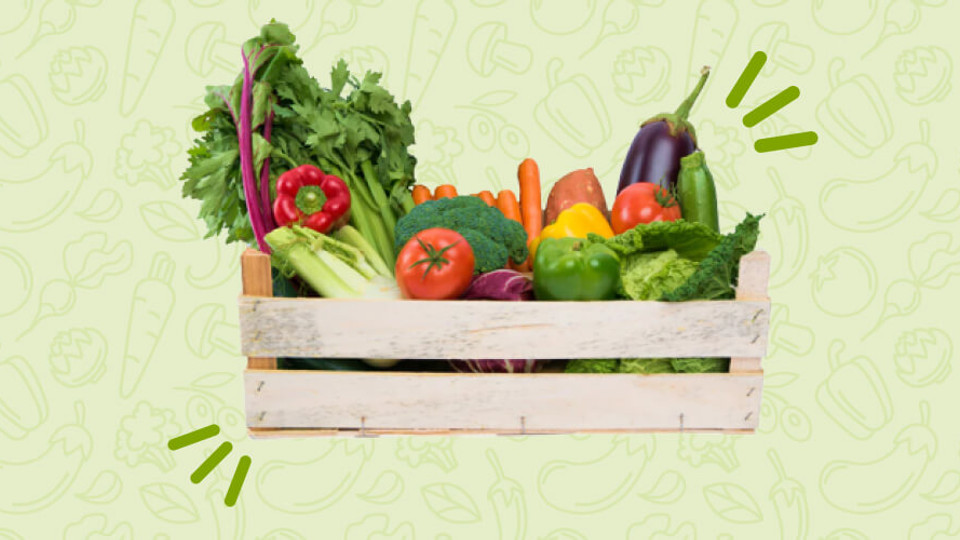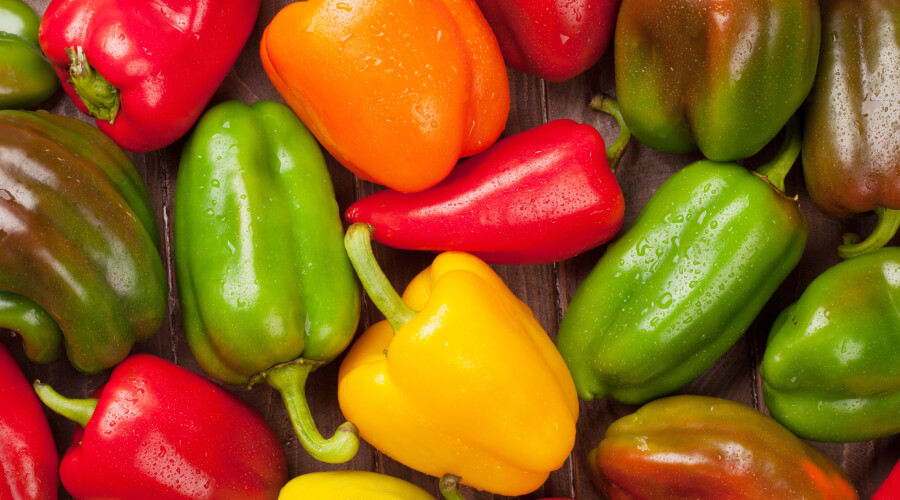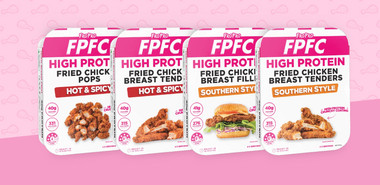
Are you tired of paying high prices for fresh produce? With skyrocketing fruit and vegetables prices, you may be wondering if there’s a better way to nourish your body with the goodness of fresh produce without having to break the bank. Well, good news: there is! All you have to do is start growing your own vegetables (and it’s easier than you think – no backyard required).
Indoor gardening has become increasingly popular in recent years, and for good reason. Not only is it a great way to save money on groceries, but it also gives you control over what goes into your food, while having access to fresh fruits and vegetables all year round. And the best part is, you don’t have to be a gardening expert to do it. In this blog, we’ll be sharing the 9 easiest foods to grow indoors, along with step-by-step instructions and tips to make sure you’re successful. So, grab your gardening gloves and let’s get started!
9 Vegetables You Can Grow Indoors Year-Round
1. Swiss Chard

-
Temperature cold
-
Harvesting time 4-6 weeks
-
Light environment Sunny window or grow lights for 6 hours
Who doesn’t love swiss chard? It’s super versatile, nutritious and delicious, making it an ideal veggie to grow indoors to complement your meal prep efforts. They thrive in cool temperatures but can be grown year-round. If you want an immediate jump, get started with seedlings indoors and transplant the pot outside as soon as the climate becomes warm. In 4-6 weeks, you’ll have your very own swiss chard to use as you like!
2. Capsicum

-
Temperature warm
-
Harvesting time 8-13 weeks
-
Light environment Sunny area or grow light for 14-16 hours
Another staple in many households, capsicums are diverse and delicious. From snacks to soup, there’s a lot you can do with capsicums. Make sure to place your capsicum plant in a sunny location that receives at least 6 hours of direct sunlight per day. Use a well-draining potting mix that is specifically formulated for capsicum, and fertilise your capsicum plant with a balanced fertiliser every two weeks.
3. Kale

-
Temperature cold
-
Harvesting time 8-9 weeks
-
Light environment Sunny area with partial shade or grow lights for 6 hours
A nutrient powerhouse! Kale prefers cool temperatures, so it’s best to grow it in a bright, cool room with a temperature between 18-20C. Use a well-draining potting mix and make sure to keep the soil consistently moist. Kale also needs at least 6 hours of direct sunlight a day so make sure to place it in a sunny location. Kale can be started from seeds or seedlings. Fertilise every 2-3 weeks with a balanced fertiliser for the best results.
4. Carrot

-
Temperature cool
-
Harvesting time 8-9 weeks
-
Light environment Sunny area with partial shade or grow lights for 6 hours
Growing carrots indoors can be a bit tricky but it’s worth persisting with because carrots are another excellent veggie for meal prepping – from using in stirfrys to munching on as snacks or even juicing, there’s a lot you can do with carrots. First, choose a container with drainage holes, and fill it with a well-draining potting mix. Carrots require a good amount of light, so make sure to place them in a sunny location that receives at least 6 hours of direct sunlight per day. Sow the seeds thinly and water the soil gently to keep it moist. Keep the soil consistently moist and fertilise every 2-3 weeks with a balanced fertiliser.
5. Cauliflower

-
Temperature cold
-
Harvesting time 4-8 weeks
-
Light environment Sunny window or grow lights for 6-8 hours
Growing cauliflower indoors can be a great way to enjoy this versatile vegetable year-round. Cauliflower prefers cool temperatures and moist, well-drained soil. Start by choosing a container with drainage holes and fill it with a high-quality potting mix. Sow the seeds or transplant seedlings in a location that receives at least 6 hours of direct sunlight per day.
6. Tomatoes

-
Temperature warm
-
Harvesting time 8-12 weeks
-
Light environment full light with eight hours of sun
From burgers to salad to a hearty big breakfast, you can do a lot with the humble tomato and it’s a great veggie to grow on your own. To start, choose a container with drainage holes and fill it with a high-quality potting mix. Tomatoes require a lot of light, so make sure to place them in a sunny location that receives at least 6 hours of direct sunlight per day. Sow the seeds or transplant seedlings and keep the soil consistently moist. Fertilise every 2-3 weeks with a balanced fertiliser. As the tomatoes grow, make sure to provide support such as a stake or cage to help them stand upright.
7. Onion

-
Temperature cold
-
Harvesting time 4-6 weeks
-
Light environment Sunny area or grow light for 6-7 hours
Onions make an otherwise bland meal taste amazing, so having a fresh supply of onions on hand is a great way to add versatility and flavour to your meal prep. The first step is to choose a container with drainage holes and fill it with a well-draining potting mix. Onions require a lot of light, so make sure to place them in a sunny location that receives at least 6 hours of direct sunlight per day. As the onions grow, make sure to keep them well-ventilated to prevent mould and disease.
8. Lettuce

-
Temperature cool
-
Harvesting time 4-6 weeks
-
Light environment Sunny area or grow light for 6-7 hours
Another meal prep staple – lettuce. Lettuce is great for salads, and sandwiches and to boost your overall greens intake each day. The first step is to choose a container with drainage holes and fill it with a well-draining potting mix. Lettuce prefers cool temperatures and bright, indirect light, so make sure to place it in a location that receives at least 4-6 hours of indirect sunlight per day. As the lettuce grows, make sure to harvest the outer leaves as they grow to encourage new growth.
9. Broccoli

-
Temperature cold
-
Harvesting time 7-16 weeks
-
Light environment Sunny area with partial shade in hotter weather
Broccoli and meal prepping seem to go hand in hand, and it’s a relatively easy vegetable you can grow on your own! Broccoli prefers cool temperatures and well-drained soil, and fertiliser every 2-3 weeks. Don’t forget to keep an eye out for pests and diseases!
How to Get Started with Your Indoor Vegetable Garden
Starting an indoor vegetable garden is a great way to have fresh produce all year round, and it’s easier than you might think. Here’s everything you need to get started:
- Containers: The first thing you’ll need is a container. As long as it has drainage holes, you can use almost anything – terra cotta pots, plastic pots, wooden planters, window boxes, or even fabric pots. Fabric pots are great because they allow the roots to breathe by air pruning them, which means no more rootbound plants.
- Potting mix: High-quality potting soil is a must for container plants. It provides a loose, fluffy medium that retains moisture and drains excess water. Some potting soils may also include compost, mycorrhizae, worm castings, fertiliser, or other supplements that boost biological activity. It’s also easy to make your own potting mix at home. Just make sure not to use topsoil or soil from your garden, as it can suffocate the roots.
- Fertiliser: Indoor-grown vegetables benefit from organic liquid or granular fertilisers throughout the growing season. We recommend using kelp meal as it’s a sustainable and completely natural product that contains over 70 vitamins and minerals. However, kelp meal does not provide enough NPK (nitrogen, potassium, and phosphorus) so an additional fertiliser is needed.
- Light: Light is also important, most vegetables need at least 6 hours of direct sun to thrive, temperature, humidity and water.
- Temperature: When it comes to temperature, vegetables thrive in a consistent room temperature between 18°C and 30°C. To avoid drafts, try to keep your plants away from sources of dry heat such as fireplaces and heating vents.
- Humidity: Humidity is also important to keep in mind, especially during the dry winter months when indoor heating can quickly dehydrate plants and soil. To maintain a healthy humidity level, you can use a room humidifier or place your plants farther away from heat sources and make sure you’re consistently watering your plants.
- Air flow: To ensure good growth, proper air flow is also important to prevent mould and fungal diseases. A simple house fan (like a box fan or oscillating desk fan) on low speed for a few hours each day near your plants should do the trick.
The Pros & Cons of Indoor Gardening
As with everything, it’s important to weigh up the pros and cons before starting your indoor veggie patch adventure. Here are some things to consider:
Pros of indoor gardening:
- Year-round gardening: Indoor gardening allows you to grow vegetables and herbs all year round, regardless of the weather outside.
- Space-saving: Indoor gardening is a great option if you have limited outdoor space.
- Pest and disease control: Indoor gardening gives you more control over pests and diseases that can wreak havoc on outdoor veggies.
- Increased yield: Growing veg indoors often produces higher yields than outdoor gardens due to the ability to control temperature, light, and humidity.
- Convenience & cost-effectiveness: Don’t pay supermarket prices – grow your own produce right from the comfort of your own home.
Cons of indoor gardening:
- Limited plant options: Some plants can’t be grown indoors due to the lack of natural light or other environmental factors.
- Maintenance: Indoor gardens require more maintenance and attention than outdoor gardens due to the need to control temperature, light, and humidity.
- Pest and disease control: While indoor gardening allows for more control over pests and diseases, it can also make it more difficult to detect and diagnose problems.
Can You Grow Vegetables Indoors All Year Round?
The answer is yes! It’s possible to grow vegetables indoors all year round. Indoor gardening allows you to control the temperature, light, and humidity, making it possible to grow a variety of vegetables indoors regardless of the outdoor weather conditions. However, it’s important to note that not all vegetables can be grown indoors and some may require specific equipment, like grow lights, to thrive. Also, keep in mind indoor gardening may require more maintenance and attention when compared to outdoor gardening.
Consider Regrowing Vegetables from Scraps
If the idea of maintaining an indoor vegetable garden sounds like too much work, don’t worry. There’s an even simpler way to grow some types of vegetables in your own home: regrowing them from scraps.
Some vegetables that are great for regrowing include green onions, lettuce, and celery. Here’s how to do it, and before you know it, you’ll have a never-ending supply of these vegetables growing in the comfort of your own home:
- Green onions: Cut off the white part and place it in a glass of water. Keep it in a sunny spot and change the water every few days. In a week or two, you’ll have new green shoots.
- Lettuce: Cut off the bottom of a lettuce head, place it in a dish with a little bit of water and place it in a sunny spot. When roots start to form, transplant them to a pot with soil.
- Celery: Cut off the bottom of the celery, place it in a dish with a little bit of water and place it in a sunny spot. Once roots start to form, transplant it to a pot with soil.
- Garlic: Plant the cloves (pointy end up) about an inch deep in a pot with soil, water it and place it in a sunny spot.
- Cabbage: Cut off the bottom of the cabbage, place it in a dish with a little bit of water and place it in a sunny spot. Once roots start to form, transplant it to a pot with soil.
- Pineapple: Cut off the top of a pineapple, remove any leaves and let it dry out for a day. Then, plant it in a pot with soil, water it and place it in a sunny spot.
- Herbs: Herbs like basil, mint, rosemary, thyme, and parsley can also be regrown from scraps. Simply place the stem cuttings in a glass of water and keep it in a sunny spot. Once roots have formed, transfer the cutting to a pot with soil.
Which Vegetables Can Grow Without Sunlight?
Many vegetables love soaking in the sunlight, like capsicum and tomatoes, while several others can grow without natural light or as little as 3-6 hours of daylight each day. Root vegetables like carrots, potatoes, and beets grow in partial shade, while leafy vegetables like salad greens, spinach, and chard grow well without daylight.
Vegetables like arugula, swiss chard, kale, lettuce, spinach, and root vegetables like carrots, potatoes, radish, beet, cabbage, cauliflower, and many more can grow without sunlight.
What Vegetables Grow The Fastest?
Don’t want to wait a long time for your veggies to grow? While growing veggies doesn’t happen overnight, there are some that grow faster than overs. The fastest-growing vegetables indoors include radishes, green onions, lettuce, baby carrots, spinach, peas, bush beans, kale, turnips, pumpkin, cucumber, leafy greens, and much more.
Don’t Have a Green Thumb? Get Produce Delivered Straight to Your Door
If you don’t fancy yourself a gardener or don’t have the time or patience to grow your own vegetables indoors (we feel ya), but still want to be eating fresh, healthy meals – have you considered a food box provider? A food box provider will deliver a box of fresh, pre-packaged ingredients and recipes to make it easy for you to cook healthy, fresh and delicious meals at home. These recipes can often be made in 20 minutes or less!
We’ve put together a whole guide on the best food box providers in Australia (and we’ve also included businesses who deliver just a box of food, whether it’s a fruit and veg box, a meat box or seafood box with no recipe cards and the freedom to cook what you like).
Read our guide to the best food box providers in Australia here.



